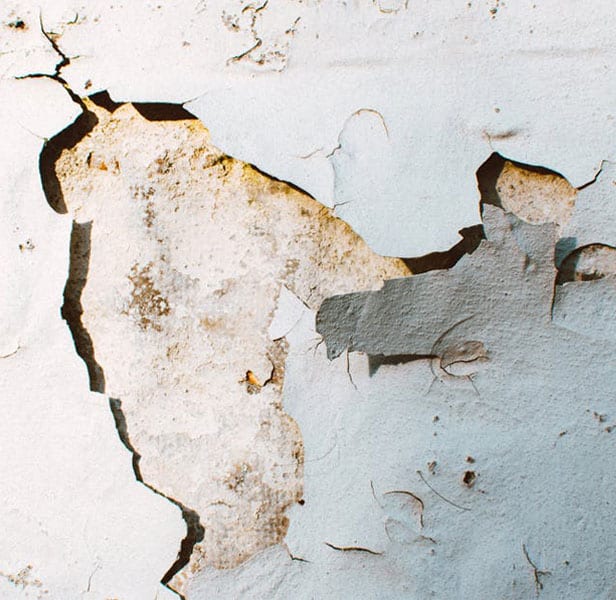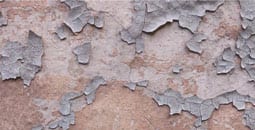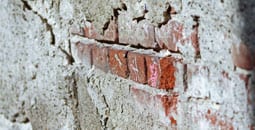



Stucco manufacturers and plastering contractors are both constantly striving to improve stucco. From time to time, however, even stucco that has been manufactured and installed correctly will crack.If you have a stucco crack on your hands, then it’s time to call a Tucson stucco repair professional. But why does stucco cracking happen in the first place?
Fine sand finish or smooth finish textures accentuate cracks in stucco, while heavier textures tend to hide stucco cracks. Although not all cracks are objectionable, cracks in stucco that are acceptable to one person might be unacceptable to another person. Cracking can also occur in stucco regardless of texture.
Cracks that appear within the first 30 days after installation and are larger than 1/16” (the thickness of a penny) can be filled or repaired. Cracks that are patched and reappear, though, could indicate a structural or substrate movement problem, requiring the use of an elastomeric coating. If a crack is visible from more than 10’ away and is a source of leaking, then it should be patched. Patching small hairline cracks (smaller than 1/16”), however, is not recommended. Small cracks will not accept material, and the resulting patch will also detract from the natural beauty of the stucco finish and will serve no useful purpose. In this case, a skim coat of new stucco finish from corner to corner or from control joint to control joint would be the correct way to repair the stucco cracks and avoid the perceptible patch look.
Plaster cracks form when a stronger force exceeds the restraint capacity of the stucco system. Cracks are “stress-related energy.” The UBC and ASTM do not call for a required hardness (PSI) for Portland Cement Plaster. Minor cracking at the corners of doors and windows and other stress points is reasonable and should be anticipated.

There are two primary reasons for stucco to crack:
Shrinkage cracks

May develop as the excess water evaporates from the drying cement mix. Shrinkage cracks can occur very early on and cannot be seen after the finish coat is applied.
Structural cracks

Can occur in stucco when stress is transferred to the plaster membrane from various external sources.
Examples of transferred stresses include:
Ground movement
Fill vs. Cut. Does the site have proper compaction? Is there settlement or subsidence? Has seismic vibration (earthquake) also been a factor?
Foundation Settlement
Concrete creep sag.
Frame/Structure Movement
Common frame trouble spots include offset loads, big spans, point loads, cantilevers, and notching green lumber (as lumber is stabilizing with the outside ambient humidity and temperature). For every 4% change in moisture, lumber changes 1% in size. As the lumber dries out, depending on the direction of the grain, lumber will twist and warp in various directions. Water may cause swelling and buckling in plywood or OSB sheeting, especially when there is no gap between the sheets. Moisture that makes its way into the lumber during periods of heavy rain will also cause the lumber to swell and put pressure on the stucco membrane.
Shear paneling
Plywood or OSB not properly spaced or staggered at vertical horizontal joints, or not run perpendicular to the studs. Plywood or OSB nailed closer than six inches at the edges may also contribute to cracking in stucco by causing the lumber to move outwardly rather than laterally. Wood-based substrates should be gapped a minimum of ¼”.
Offset framing
Irregular, inconsistent, or offset framing can cause variations in the stucco thickness, thus subjecting it to random cracking.
Heavy rain
If the framing lumber of sheathing becomes wet, then more cracks are likely to appear. This happens because the lumber or sheathing may swell, thus putting pressure on the stucco membrane and causing it to crack.
Movement
This includes mechanical vibration and other movement.
Loads
These include wind loads, live loads, and dead loads that exceed design specifications. Stucco is not a structural material, so it will not hold up the building. If the building moves for any reason, then the stucco will develop cracks.
Water penetration
Minor cracking is not likely to contribute to water intrusion, but large cracks may allow water to reach the back plane or plaster. A properly installed weather barrier will direct any incidental water to the bottom of the wall and then allow it to exit at the weep screed flashing at the bottom of the wall.
Cause
A stucco expert can generally determine the cause of some cracks, but at the same time, some cracks can be puzzling. In some situations, it may even take a structural engineer to evaluate how or why a building is moving.

